Embarking on the journey of Thai Guava farming in India holds the promise of both bounty and profit. This tropical delight, known for its sweet aroma and unique flavor, has captured the attention of farmers seeking lucrative opportunities. In the following discourse, we shall delve into the intricate realm of cultivating Thai Guava, unraveling its yield potential, the coveted profits per acre, plant procurement costs, and the comprehensive cost of cultivating this delectable fruit across a single acre of land. Prepare to unearth the secrets of a flourishing Thai Guava venture, where nature’s gifts meet astute cultivation for remarkable gains.
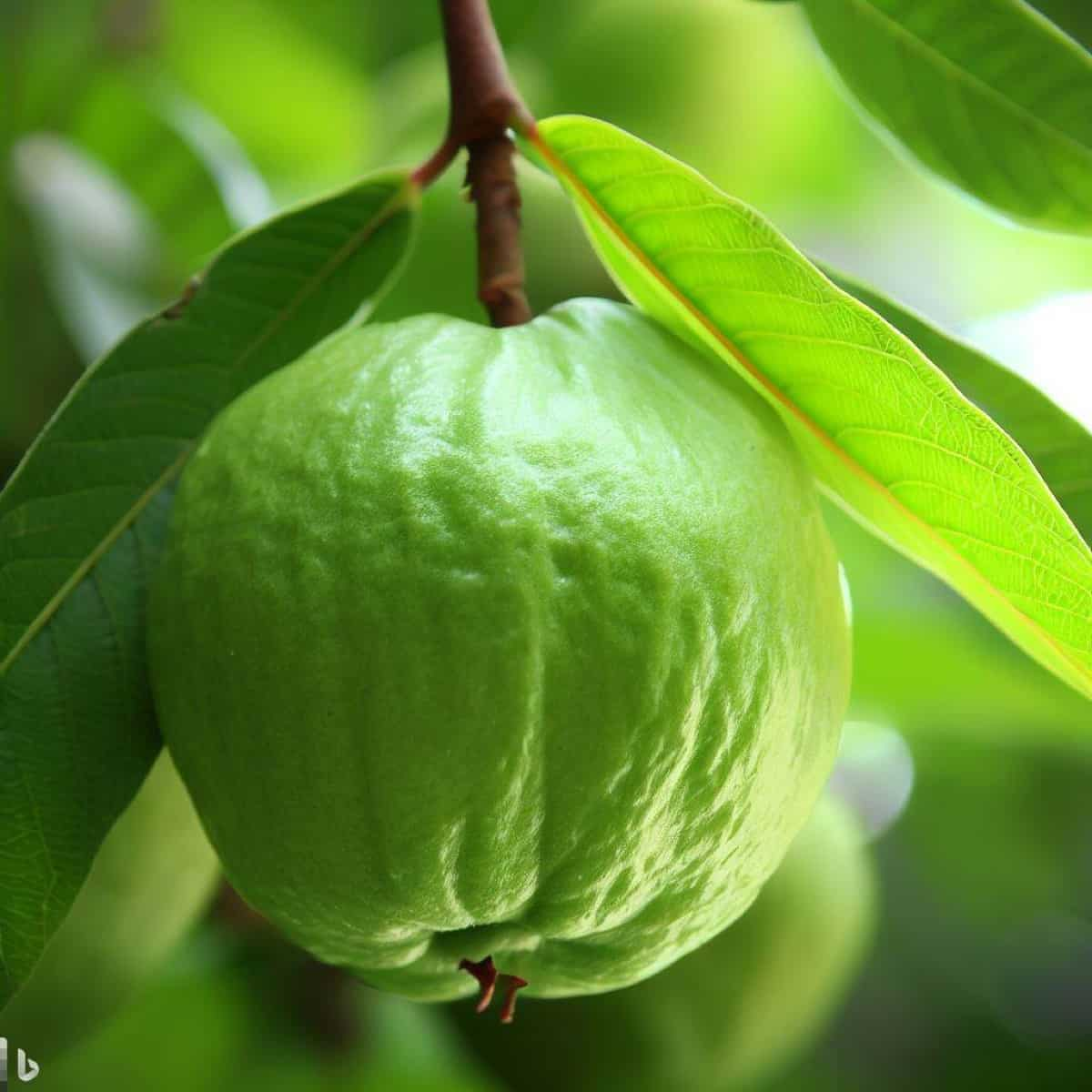
Profitable Thai Guava Farming in India
What is Thai Guava Farming?
Guava (Psidium guajava), a significant commercial fruit in India, ranks as the fourth most crucial fruit, trailing behind mango, banana, and citrus varieties. Guava cultivation acreage in India expanded by 64% from 94 thousand ha. in 1991-92 to 155 thousand ha. in 2001-02. Production surged by 55% during the same period, from 11 lakh metric tons to 17 lakh tonnes. Leading guava-producing states encompass Uttar Pradesh, Bihar, West Bengal, Maharashtra, Chhattisgarh, Tamil Nadu, Karnataka, Madhya Pradesh, Gujarat, and Andhra Pradesh.
Guava is a rich vitamin C, pectin, calcium, and phosphorus source. Processed guava products like jams, jellies, and nectar are prevalent, with guava jelly puree particularly renowned for its captivating hue and delightful taste. The puree is versatile in juices, cakes, puddings, sauces, ice cream, jams, and jellies. Moreover, guava leaves are valuable in treating diarrhea, dyeing, and tanning processes. The demand for guava revolves around fresh consumption and processing, with a mere 0.05% of the yield being exported internationally.
Thai Guavas: A Flavorful Tropical Delight
Thai guavas come in various sizes, typically small to medium, exhibiting a round to oval shape. Their delicate skin can be smooth or textured, adorned with bumps, warts, and nodes. Beneath the skin, the dense, coarse, and thick white flesh offers a crunchy, aqueous, and firm mouthfeel. Encasing this flesh is a group of cream-colored to pale yellow seeds, though notably hard and edible. Thai guavas are mildly sweet and tart, enriched with floral and fruity undertones.
Seasons: Thai guavas remain available year-round, ensuring a consistent supply of this tropical gem. Hailing from the Psidium genus within the Myrtaceae family, Thai guavas encompass diverse varieties often associated with the “Thai guava” label. Most belong to the category of white guavas, lauded for their crisp consistency. These fruits thrive in the wild and local markets and are prevalent in Thailand’s landscape. Frequently consumed when semi-ripe, they lend a delightful crunch to various dishes. Renowned for their subtle tanginess and sweetness.
In case you missed it: Unlocking the Benefits of Guava Intercropping for Doubling Farmer’s Income
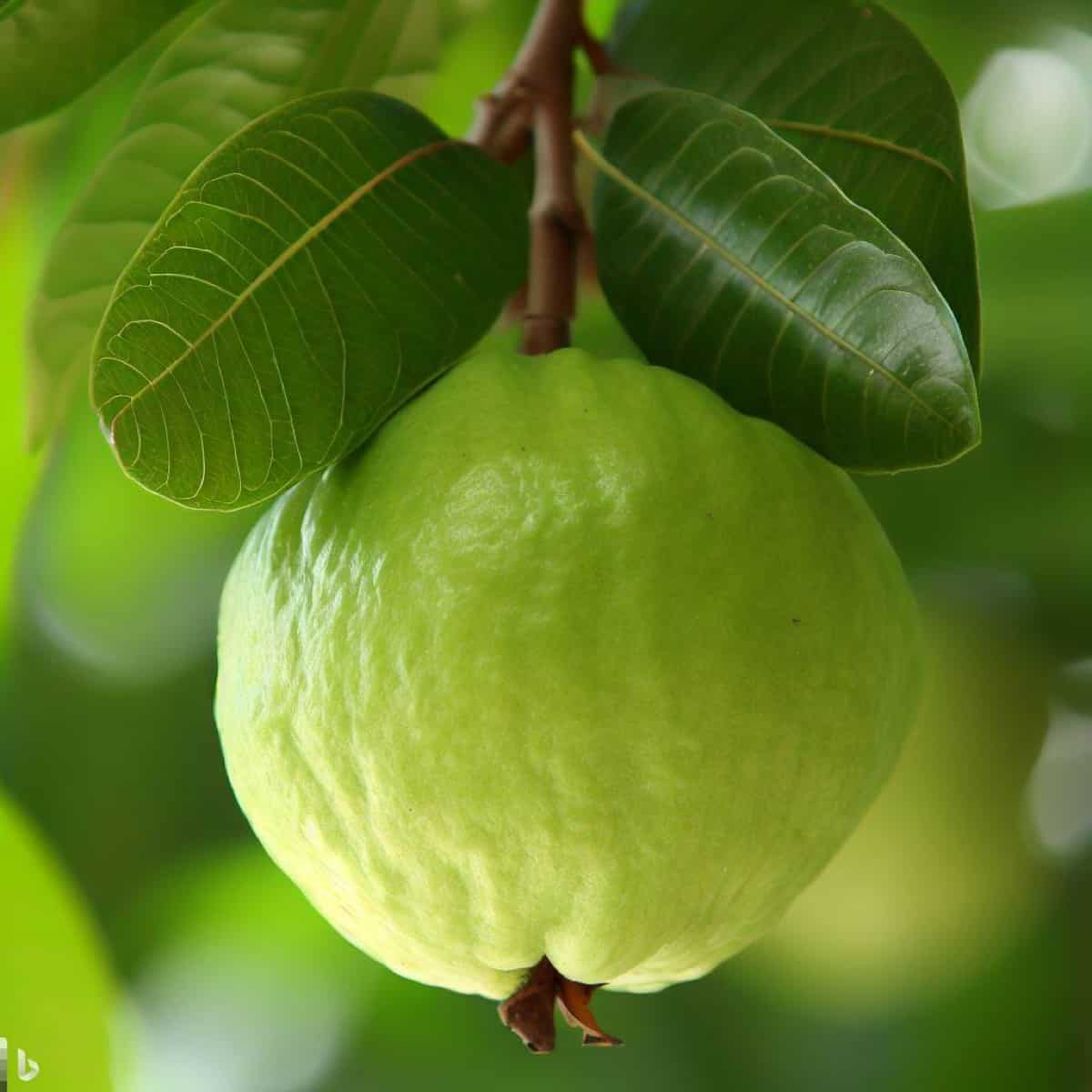
Market Potential and Farmer Preference for Thai Guava in India
- Planting Advantage: Thai guava, renowned for its exceptional attributes, holds significant market potential in India. Farmers favor this variety due to its strategic planting advantages.
- Optimal Plant Count: With 600 plants per acre, Thai guava maximizes planting efficiency, resulting in ample yield.
- Biannual Harvests: Capitalizing on two harvest seasons annually enhances productivity and profit potential.
- Progressive Yield: The yield progression is noteworthy. Starting from the second year, farmers can expect 20 KG per tree, escalating to 30 KG in the third year and an impressive 40 KG per tree from the fourth year onward.
- Quality and Demand: Thai guavas boast superior quality, making them desirable for local markets and export purposes.
- Low Maintenance: This variety demands moderate maintenance and displays resistance to pests, further appealing to farmers.
- Comparative Yield: Unlike traditional guava plantations yielding 200-350 KG per tree annually, Thai guava delivers exceptional results. The second year’s yield alone amounts to 20 KG per tree, equivalent to 12000 Kilos.
- Profit Projection: The returns remain lucrative despite a selling price as low as 20 Rs per KG (compared to the average of 40 Rs per KG for guavas).
Climate and Soil Requirements for Profitable Thai Guava Farming
Thai Guava, a tropical fruit from South America, thrives in warm and humid climates in India. It thrives in areas with temperatures between 25°C and 30°C and can grow up to 1,500 meters above sea level. However, frost-prone areas are essential for the plant’s growth. Soil selection is crucial for Thai Guava’s success, with well-draining, fertility-rich sandy loam soil being the preferred choice.
Fertile sandy loam soil with a pH level of 5.5 to 7.0. A soil test is recommended before planting to identify potential amendments. The fruit can be cultivated at altitudes up to 1,500 meters, but vigilance against frost-prone areas is essential.
In case you missed it: Key Rules to Get Rid of Fruit Fly in Guava: Symptoms, How to Treat, Management, Chemical, and Organic Control
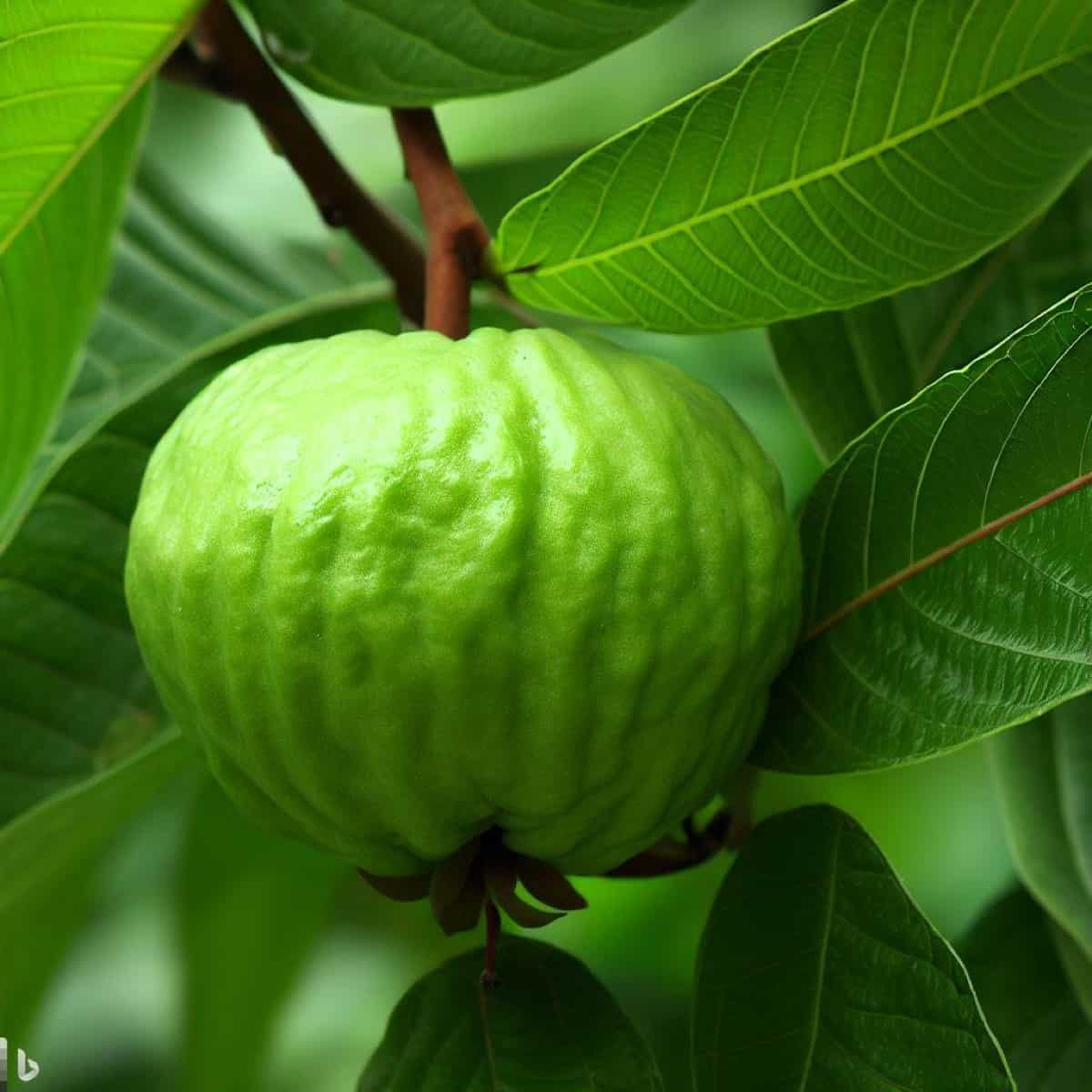
Selecting the Right Variety of Thai Guava for Indian Conditions
Thai Guava boasts enticing varieties, each flaunting distinct flavors, sizes, and attributes. Among the favored options cultivated in India are Thai White, Thai Maroon, Thai Apple, and Thai Pink. Opting for the ideal variety necessitates aligning it with your specific climate conditions and catering to prevailing market preferences.
Thai Guava Plant Price in India
The cost of Thai Guava plants in India can vary based on factors like variety, size, and supplier. On average, a young Thai Guava plant can be purchased for around Rs. 40 to Rs. 100. Investing in healthy plants from reputable sources is crucial for successful cultivation and optimal yield.
Propagation Techniques for Thai Guava Farming
Thai Guava can be propagated using various methods, including collecting seeds from ripe fruits, stem cuttings from mature plants, and air layering. To plant the saplings, dig holes twice the size of the root ball, maintain a distance of 8-10 feet between each sapling, and plant them at the same depth as they were in their containers. This ensures ample space for growth and promotes healthy root development.
Site Selection and Preparation for Thai Guava Plantation
To ensure a successful Thai Guava plantation, selecting a location with optimal sunlight exposure for at least 8 hours daily is essential. This will promote robust growth and yield. Additionally, it’s crucial to shield your plants from strong winds, preventing damage to young plants. Before planting, ensure the area is clean and free from weeds, rocks, and debris to create an ideal environment for your Thai Guava plants to thrive.
Planting and Spacing Guidelines for Thai Guava Trees
Optimal land preparation coincides with dry days involving plowing, leveling, and meticulous weeding. Before the monsoon’s onset, create pits measuring 1 m by 1 m by 1 m. Assemble a potent blend by infusing each hole with 25 Kg of farmyard manure, 500 grams of SSP, 15 Kg of Neem Cake, 50 grams of Lindane powder, and soil to thwart termite invasions and enrich fertility.
The prime sowing window is August–September, with February and March also viable options. Maintain a sowing depth of 25-30 cm for optimal outcomes. While recommending a planting distance of 5-8 meters contingent upon guava species, soil richness, and irrigation accessibility, adhering to an allowance of 8 to 10 feet between saplings permits unhampered expansion. This prudent spacing strategy ensures their unhindered growth trajectory.
In case you missed it: VNR Guava Farming: Cultivation Practices and Production Management
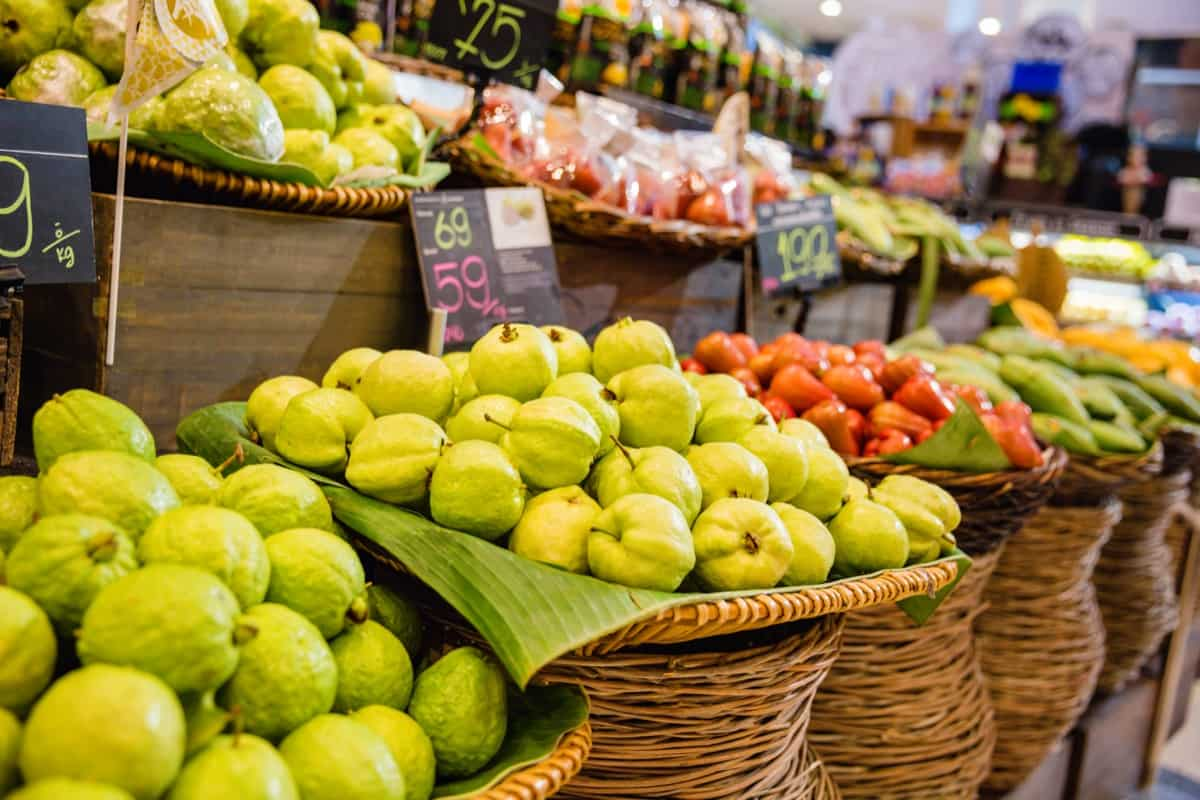
Essential Nutrient Management for Healthy Thai Guava Trees
Thai Guava trees require a systematic nutrient supply for robust growth. A recommended approach combines Cow Dung, Urea, SSP, and MOP per plant. Consider supplementing the dosage between 7-10 years for enhanced nutrient care. Apply Cow Dung (30-40 kg), Urea (1000-1250 grams), SSP (1500-2000 grams), and MOP per tree if soil fertility needs.
Apply 50% of the dose in May-June and the remaining 50% in September-October, aligning with the tree’s growth cycle. During the fruiting phase, enhance yield potential by spraying Zinc Sulphate (4 grams) + Boric Acid (2 grams) per liter of water, accompanied by Urea (2%).
Irrigation Practices for Optimal Growth and Yield of Thai Guava
Watering Strategy: Initiate sapling growth by providing consistent watering to facilitate sturdy root system establishment. Subsequently, maintain an irrigation interval of every 4 to 6 days once the roots are firmly established. This regimen ensures essential hydration for sustained growth and yield.
Fertilization Approach: Nurture robust Thai Guava growth by administering a well-balanced NPK fertilizer throughout the active growing season. This strategic application bolsters healthy growth enhances fruit development, and cultivates an environment conducive to optimal yield.
Pest and Disease Management in Thai Guava Farming
- Fruit Fly: This menacing pest damages guava by sucking and rotting fruits, leading to premature dropping. Counter it by discarding infested fruits and spraying Fenvalerate@60ml in 100L of water/1 acre weekly before fruit ripening.
- Mealy Bug: Weakening plants by drawing sap, mealy bugs are controlled by Chlorpyriphos 50EC@350ml/100 liters water per hectare once observed.
- Shoot Borer: These pests infest shoots, causing drying. Combat them with Quinalphos@400ml/Chlorpyriphos@500ml in 100 liters of water/acre.
- Wilt: This severe disease triggers guava plants’ wilting, yellowing, and drying. Improve drainage, eliminate infected plants, and drench soil with Carbendazim@25gm or Copper oxychloride@30gm in 10L water, followed by spraying.
- Dieback or Anthracnose: Identified by black/brown spots, dieback rapidly rots fruits. Prune affected parts, discard infected fruits, and spray Captan@300gm in 100L water for 15 days. Copper oxychloride@40gm/10L water is an option.
- Aphid: Sapping plant juices, aphids deform young leaves. Spray Methyl Demeton@20ml or Dimethoate@20ml in 10L water on fresh leaves for control.
Pruning and Training Techniques for Thai Guava Trees
Thai Guava trees require strategic pruning and training to enhance resilience and support yields. Regular pruning eliminates infected, diseased, and lifeless branches, ensuring plant health. Summer pruning is advised to protect budding plants from sun damage. As guava seedlings mature, provide support to encourage upright growth and develop strong stems. Weed control can be achieved by applying Gramoxone@5ml/liter water/acre for an acre in March, July, and September.
Flowering and Fruit Development in Thai Guava Trees
Thai Guava trees typically begin flowering 6 to 8 months after planting. The flowering process involves a sequence of events starting with the emergence of flower buds, followed by blooming and pollination. Fruit development spans around 3 to 4 months from pollination to maturity. Guava flowers are predominantly self-pollinating, but cross-pollination can enhance yield. During this phase, timely irrigation, fertilization, and pest control are essential for healthy flower development and successful fruit formation.
In case you missed it: How to Start Hybrid Guava Farming in India: Varieties, Business Plan, and Cultivation Management
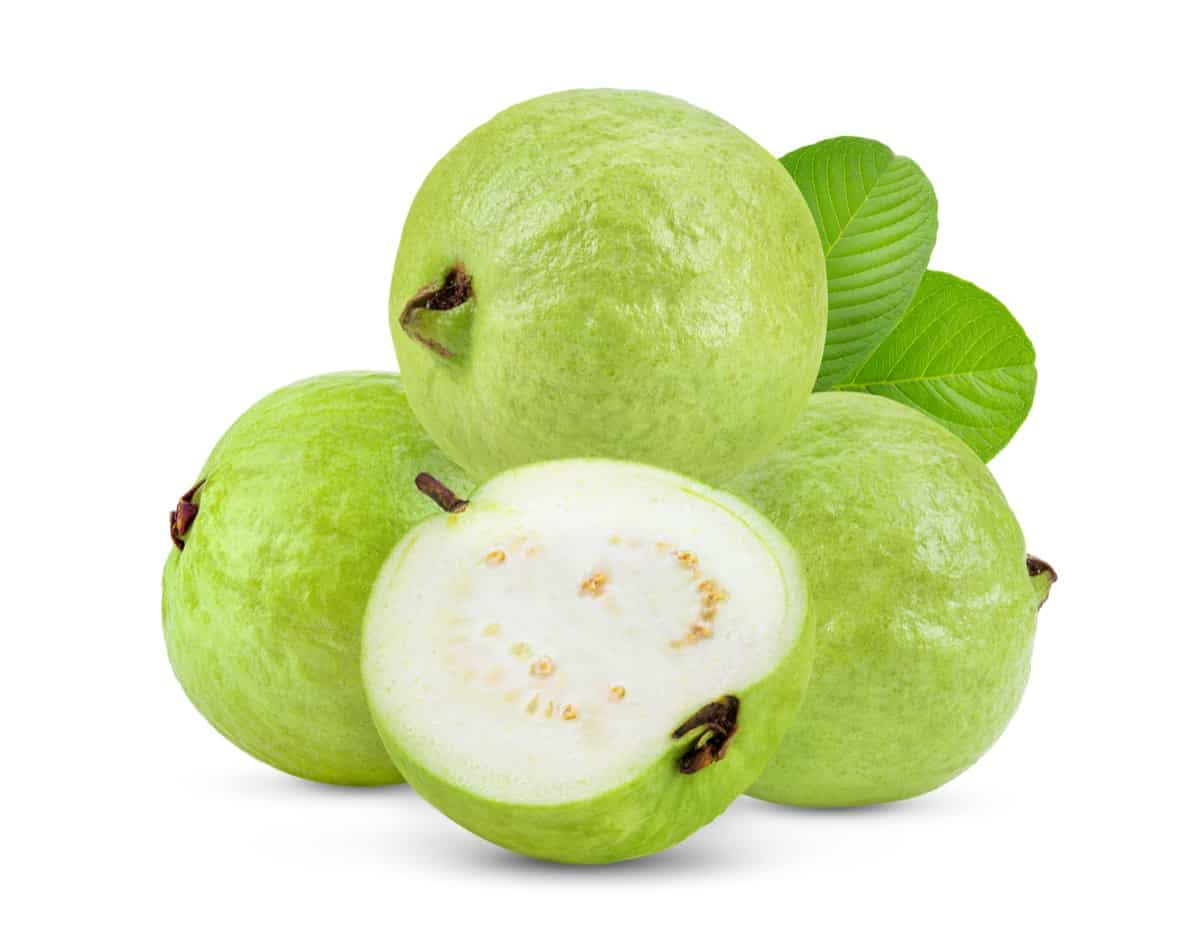
Harvesting and Post-harvest Handling of Thai Guava Fruits
Thai Guava fruits should reach their optimum size and color, which changes from green to yellowish-green or pinkish when ripe. Harvesting involves using sharp pruning shears and gentle handling to prevent damage. Post-harvest care involves cleaning the fruits with water to remove dirt and debris and storing them in a cool, well-ventilated area.
Thai Guava fruit harvesting involves assessing fruit ripeness based on color and market proximity. Harvesting fully matured fruits is ideal for local markets, while slightly unripe ones are suitable for distant ones. Post-harvest fruits are graded based on color, weight, and size. Storage is recommended at 18°-23°C for 7-10 days or 5°-6°C with 75-85% humidity.
Thai Guava Yield Per Acre in India
Thai Guava farming emerged as a lucrative venture in India due to its transformative yield potential. While soaring market prices for most fruits hinder profitability, Thai Guava’s exceptional performance defies this trend. Traditionally, Guava cultivation lacked vigor, with limited trees per acre and modest yields.
However, modern advancements in varieties, including Thai Guava from Taiwan, revolutionized the industry. Thai Guava surpasses its predecessors with improved size, quality, and yield. These guavas can weigh up to 2 kilos, offering impressive harvests. Optimally harvested at 200-300 grams, Thai Guava’s remarkable success resonates through Indian agriculture.
Thai Guava Profit Per Acre in India
Indian farmers prefer Thai Guava due to its remarkable profitability. With 600 plants per acre, two annual harvests, and escalating yields (20 KG in the second year, 30 KG in the third, and 40 KG from the fourth year onward), Thai Guava outshines traditional guava plantations. Delivering good quality fruits suitable for export and local markets, coupled with manageable maintenance and pest control, Thai Guava promises abundant and consistent harvests, significantly surpassing traditional guava cultivation.
1 Acre Cost of Cultivation of Thai Guava in India
The Thai Guava plantation requires significant investment, with labor accounting for over 60% of the budget. Key expenses include drip irrigation, plant costs, fertilizers, pesticides, soil testing, and fruit protection covers. The initial setup costs between 150,000 and 200,000 Rs, with additional funds for protective plastic covers and foam for ripe fruits. Plant pruning optimizes yield by retaining three leaves and promoting new branches, resulting in plants standing at least 3 meters tall with a 3-meter canopy.
In case you missed it: How this Farmer Earning 60 Lakh Rupees from Thaiwan Pink Guava Cultivation
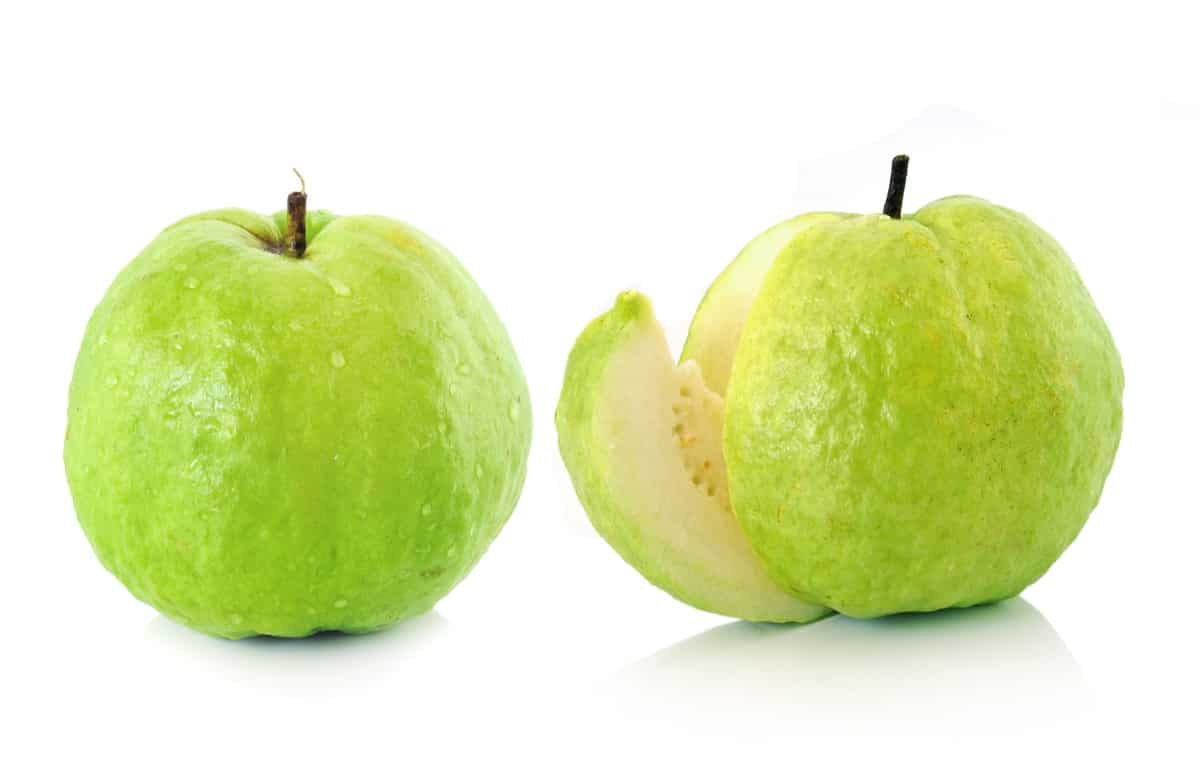
Conclusion
Thai Guava farming in India presents a profitable venture with impressive yields and profits per acre. With its substantial benefits, including consistent yields, export potential, and moderate maintenance, Thai Guava emerges as a financially viable and rewarding choice for farmers seeking sustainable and lucrative agricultural endeavors.
- Types of Pesticides Used in Agriculture: A Beginner’s Guide
- Economical Aquaculture: A Guide to Low-Budget Fish Farming
- 15 Common Planting Errors That Can Doom Your Fruit Trees
- How to Make Houseplants Bushy: Effective Tips and Ideas
- Innovative Strategies for Boosting Coconut Pollination and Yield
- Pollination Strategies for Maximum Pumpkin Yield
- The Complete Guide to Chicken Fattening: Strategies for Maximum Growth
- Natural Solutions for Tulip Problems: 100% Effective Remedies for Leaf and Bulb-Related Issues
- Revolutionizing Citrus Preservation: Towards a Healthier, Greener Future
- Natural Solutions for Peony Leaf and Flower Problems: 100% Effective Remedies
- Maximizing Profits with Avocado Contract Farming in India: A Comprehensive Guide
- Natural Solutions for Hydrangea Problems: 100% Effective Remedies for Leaf and Flowers
- The Ultimate Guide to Choosing the Perfect Foliage Friend: Bringing Life Indoors
- From Sunlight to Sustainability: 15 Ways to Use Solar Technology in Agriculture
- The Ultimate Guide to Dong Tao Chicken: Exploring from History to Raising
- The Eco-Friendly Makeover: How to Convert Your Unused Swimming Pool into a Fish Pond
- Mastering the Art of Delaware Chicken Farming: Essentials for Healthy Backyard Flocks
- 20 Best Homemade Fertilizers for Money Plant: DIY Recipes and Application Methods
- How to Craft a Comprehensive Free-Range Chicken Farming Business Plan
- Brighten Your Flock: Raising Easter Egger Chickens for Beauty and Bounty
- How to Optimize Your Poultry Egg Farm Business Plan with These Strategies
- Subsidy for Spirulina Cultivation: How Indian Government Schemes Encouraging Spirulina Farmers
- Ultimate Guide to Raising Dominique Chickens: Breeding, Feeding, Egg-Production, and Care
- Mastering the Art of Raising Jersey Giant Chickens: Care, Feeding, and More
- Ultimate Guide to Raising Legbar Chickens: Breeding, Farming Practices, Diet, Egg-Production
- How to Raise Welsummer Chickens: A Comprehensive Guide for Beginners
- How to Protect Indoor Plants in Winter: A Comprehensive Guide
- Ultimate Guide to Grow Bag Gardening: Tips, Tricks, and Planting Ideas for Urban Gardeners
- Guide to Lotus Cultivation: How to Propagate, Plant, Grow, Care, Cost, and Profit
- Agriculture Drone Subsidy Scheme: Government Kisan Subsidy, License, and How to Apply Online
- Ultimate Guide to Raising Araucana Chickens: Breed Profile, Farming Economics, Diet, and Care
- Bringing Hydroponics to Classroom: Importance, Benefits of Learning for School Students
- Ultimate Guide to Raising Polish Chickens: Breed Profile, Farming Economics, Diet, and Care
- Ultimate Guide to Raising Australorp Chickens: Profile, Farming Economics, Egg Production, Diet, and Care
- Silkie Chicken Farming: Raising Practices, Varieties, Egg Production, Diet, and Care
- Sussex Chicken Farming: Raising Practices, Varieties, Egg Production, Diet and Care
Excellent article. Very good information which is tempting for implementation. Wish I had agricultural land in order to do it but thanks anyway and kudos for the great service